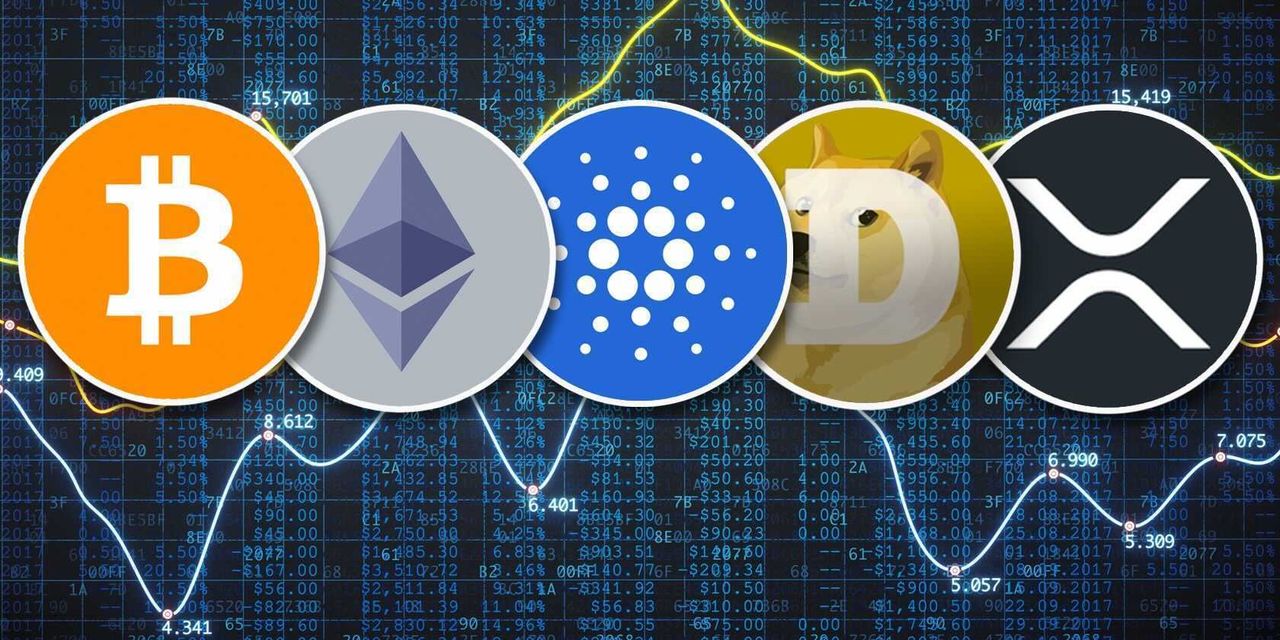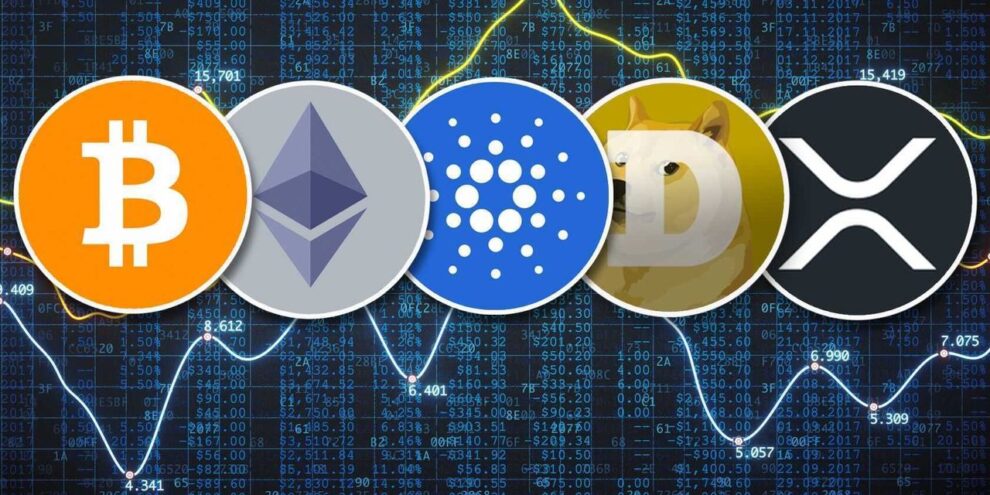
Enjoyed the Ethereum Merge watch party last night? Welcome back to Distributed Ledger, our weekly crypto newsletter that reaches your inbox every Thursday. I’m Frances Yue, crypto reporter at MarketWatch. I’ll walk you through what’s next as the Merge is completed.
Find me on Twitter at @FrancesYue_ to send feedback, or tell us what you think we should cover. You can also reach me through email to share your personal stories with crypto.
Crypto in a snap
Bitcoin BTCUSD, -0.55% gained about 4.7% over the past seven days, and was trading at around $19,837 on Thursday, according to CoinDesk data. Ether ETHUSD, -6.00% lost 0.9% over the seven-day stretch to around $1,506. Meme token Dogecoin DOGEUSD, -2.31% dipped 0.2% while another dog-themed token, Shiba Inu SHIBUSD, -1.66, lost 0.2% from seven days ago.
Crypto Metrics
| Biggest Gainers | Price | %7-day return |
| Ravencoin | $0.06 | 59.6% |
| Terra | $2.72 | 44.3% |
| Celsius Network | $1.88 | 39.6% |
| Evmos | $3.17 | 25.7% |
| Cosmos Hub | $15.11 | 16.5% |
| Source: CoinGecko as of Sept. 15 |
| Biggest Decliners | Price | %7-day return |
| Terra Luna Classic | $0.0002 | -43.8% |
| Helium | $4.05 | -23.5% |
| BitDAO | $0.53 | -16% |
| EOS | $1.42 | -14.6% |
| Synthetix Network | $2.62 | -12.3% |
| Source: CoinGecko as of Sept. 15 |
The Merge is done
Ethereum, the blockchain that underpinned the second largest cryptocurrency ether, has completed a highly-anticipated upgrade that is supposed to make the network 99.9% more energy efficient.
The so-called Merge upgrade, which has been in the making for six years, was completed at around 2:42 a.m. Eastern time Thursday.
Explained: What is the Merge? Here are five things you should know
Previously, under a consensus mechanism called proof-of-work, Ethereum was secured by miners, where it requires high consumption of computational power. Now, under a different mechanism called proof-of-stake, the network is secured by stakers, or Ether holders who lock up their tokens.
The Merge marked the first time for a blockchain to ever transition from proof-of-work to proof-of-stake.
Before it happened, some industry participants, such as Todd Lippiatt, head of capital markets and financial services for NAX, compared it to the Year 2000 problem, which refers to the fear that some computer systems may be unable to correctly format calendar data for dates in and after the year 2000, which could bring down worldwide infrastructures. (Few major errors ended up occurring in 2000.)
Others, including Brian Mosoff, chief executive at Ether Capital, compared the Merge to changing the engine in a car from combustion to electric, while the car is driving on the highway.
The Merge appeared to have been completed successfully, but industry participants are waiting to see what would happen to the surrounding infrastructure, wallet providers, node operators and specific applications on the Ethereum network in the following hours and days, Mosoff noted.
A new proof-of-work chain?
As Ethereum miners are rendered obsolete after the Merge, they are looking for new sources of revenue.
Ethereum miner Chandler Guo in late July proposed to “hard fork” the Ethereum blockchain, or splitting the chain into a duplicate version based on the proof-of-work consensus mechanism.
Backers of the potential new chain tweeted recently that the fork will happen 24 hours after the Merge, or early Friday.
If the fork materializes, all ether holders are expected to receive an equal amount of new tokens on the forked chain. As a result, some traders have been borrowing ether to capture that value, or longing ether and shorting ether futures to hedge their positions.
Still, the new proof-of-work tokens may have very limited liquidity, noted NAX’s Lippiatt.
“Where do we get liquidity for the new proof-of-work token? Because it doesn’t exist yet,” Lippiatt said. “The only things that actually have been traded are IOUs (informal document acknowledging debt) or futures contracts on it. It’s all cash settlements and you can’t deliver it,” Lippiatt added.
“Supposedly some of the exchanges can deliver the actual underlying token into futures obligation, but we haven’t seen enough, and if you’re a US citizen, there’s very few places you can go and actually get any liquidity,” according to Lippiatt. Exchanges such as Binance and Coinbase said they would go through “strict” listing processes to decide whether to list the new token.
Staking
Staking ether now is expected to yield about 4.6% annually, while roughly 11.8% of ether has been staked, according to data from Stakingrewards.com. Holders will not be able to withdraw their staked ether until Ethereum’s Shanghai upgrade, which is expected to take place in 2023.
“I do think that more people are going to stake post Merge,” Mosoff said. “You would assume that a lot of people have been waiting till the Merge to decide whether they want to stake, to see that it’s successful, to not be exposed to as much of the downside risk,” Mosoff noted.
“A lot of crypto trading platforms haven’t offered staking yet, or they haven’t done it for institutions, that will start to roll out in a very meaningful way in the next six months,” according to Mosoff.
Scalability
While the Merge didn’t directly solve some problems Ethereum users have complained about, such as the high costs and low speed for transactions, it paved the way for the blockchain to scale up with improved efficiency.
As Ethereum moved to proof-of-stake, Ethereum foundation is shifting its focus to sharding, a multi-phase upgrade that is expected to be completed in 2023, and aims to increase the network’s scalability and capacity.
Crypto companies, funds
Shares of Coinbase Global Inc. COIN, -1.87% lost 1.2% to $77.79 on Thursday, but were up 6.34% over the past five trading sessions. Michael Saylor’s MicroStrategy Inc. MSTR, -4.00% dropped 2.7% Thursday to $219.97, contributing to a 6% loss over the past five days.
Mining company Riot Blockchain Inc. RIOT, -2.38% shares declined 1.8% to $7.42 Thursday, and they were down 0.5% over the past five days. Shares of Marathon Digital Holdings Inc. MARA, -4.21% lost 3.4% to $12.17, down 8% over the past five days. Another miner, Ebang International Holdings Inc. EBON, +1.21% saw shares up 1.5% to $0.48 on Thursday, for a 3% increase over the past five days.
Overstock.com Inc. OSTK, -5.13%’s shares tumbled 5.6% to $27.02. The shares traded 2.1% lower over the five-session period.
Shares of Block Inc. SQ, +0.98%, formerly known as Square, added 0.5% to $68.93 and were down 2.2% for the week. Tesla Inc. TSLA, +0.38% shares picked up 0.3% to $303.70, up 4.9% over the past five days.
PayPal Holdings Inc. PYPL, -1.29% went down 1.4% to $96.28, up 0.1% over the five-session stretch. Nvidia Corp. NVDA, -1.52% shares decreased 2% to $128.60, looking at a 8% loss for the past week.
Advanced Micro Devices Inc. AMD, -1.02% shares traded 1.8% lower to $76.05 on Thursday, down 8% from five trading days ago.
Among crypto funds, ProShares Bitcoin Strategy ETF BITO, -0.98% dipped 1.3% to $12.12 Thursday, while its Short Bitcoin Strategy ETF BITI, +0.96% gained 1.3% to $38.05. Valkyrie Bitcoin Strategy ETF BTF, -0.85% went down 1.1% to $7.56, while VanEck Bitcoin Strategy ETF XBTF, -1.00% traded 0.6% lower to $19.30.
Grayscale Bitcoin Trust GBTC, -2.10% slipped 1.7% to $12.15.











Add Comment